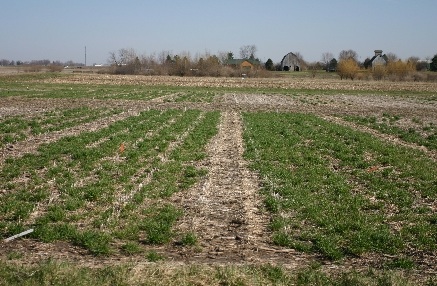
Features
Fruit
Production
The future of cover crops
July 15, 2011 By American Society of Agronomy (ASA) Crop Science Society of America (CSSA) Soil Science Society of
 July 14, 2011, Madison, WI
July 14, 2011, Madison, WI
– Winter cover crops are an important component of nutrient cycling, soil cover
and organic matter content. Although its benefits are well documented, cover
crop use in farming systems is relatively low. Research has shown that time and
money are the two primary reasons why farmers are hesitant to adopt the
technique. Developing innovative and cost-effective crop cover systems could
increase the use of winter cover crops.
July 14, 2011, Madison, WI
– Winter cover crops are an important component of nutrient cycling, soil cover
and organic matter content. Although its benefits are well documented, cover
crop use in farming systems is relatively low. Research has shown that time and
money are the two primary reasons why farmers are hesitant to adopt the
technique. Developing innovative and cost-effective crop cover systems could
increase the use of winter cover crops.
A scientist with the USDA
Agricultural Research Service (ARS) and colleagues investigated the potential
use of self-seeding winter cereal cover crops. Results from the study were
published in the July-August 2011 issue of the Agronomy Journal.
 |
|
Scientists measured the
amount of green groundcover self-seeded winter cover crops produced after
soybean harvests in the fall of 2007 and 2008. The study revealed that the
cover crop’s growth through self-seeding was most consistent using a wheat
cover crop and mechanical seed dispersal before the soybean harvest.
“The significance of this
research, in addition to lowering the cost and risk of establishing cover
crops, is to extend the ecological functions that cover crops perform beyond
their normal termination dates,” explained Jeremy Singer, a researcher from
USDA-ARS.
Organic crop producers can
benefit from self-seeding cover crops because of the potential for enhanced
weed suppression without disturbing the soil. Cover crops also increase
nutrient retention and reduce soil erosion, which can improve water quality.
Research is ongoing at the
National Laboratory for Agriculture and the Environment to find cover crop
systems that minimize risk to crops and maximize their conservation benefits.
Print this page